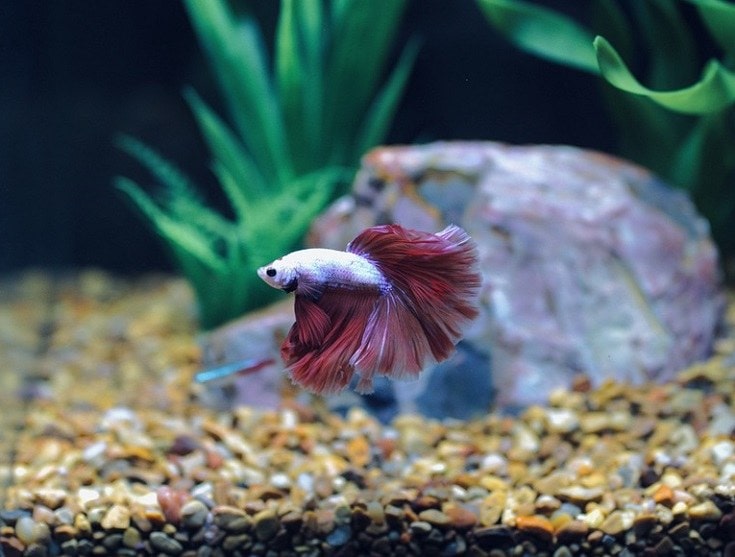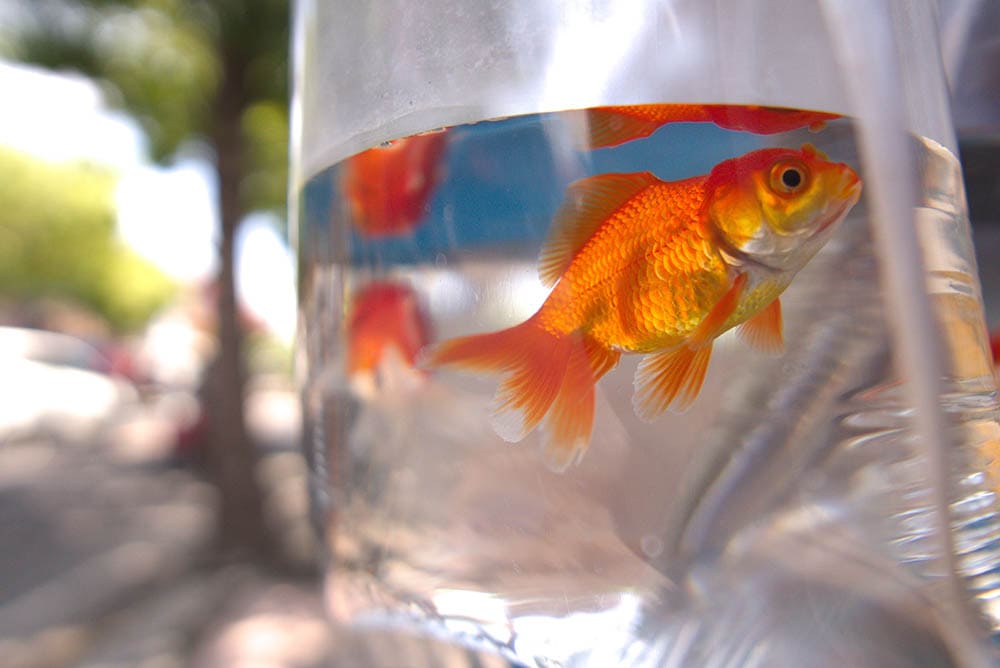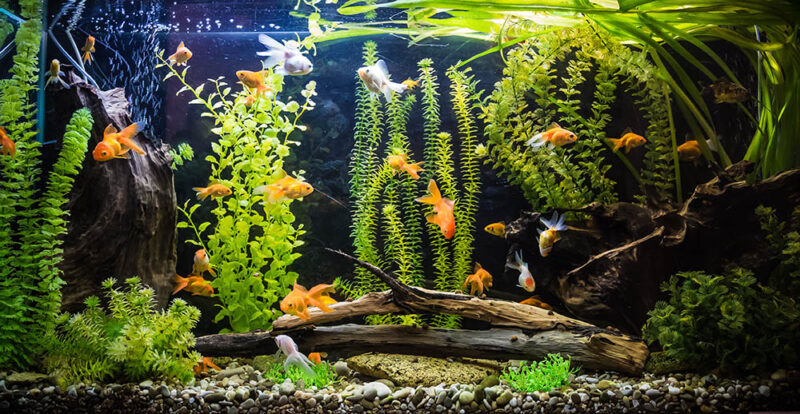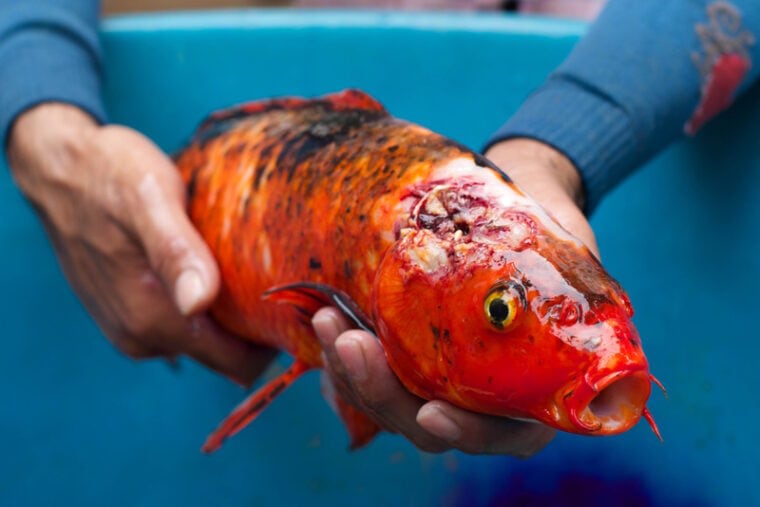
Click to Skip Ahead
You’re avid about fish and monitor your tank carefully. You might have noticed some small depressions or holes forming on some of the fish in your tank, so you go to Google and find out there’s a syndrome aptly named hole-in-the-head disease. What causes this condition, and what can you do to treat and then prevent it? Let’s dive in and look at hole-in-the-head disease in fish.
What Is Hole-in-the-Head Disease?
Hole-in-the-head is a common disease affecting freshwater and saltwater fishes. The condition is also called head and lateral line erosion. The hallmark signs of hole-in-the-head disease are dark holes or dimples in two major places on your fish: the head and the lateral line. There could be one or two spots, or your fish could have numerous holes.
It’s important to understand that many things can cause hole-in-the-head disease. You could have one fish in a tank affected or many. The most commonly affected fish species are South American cichlids. Discus and Oscars make up the largest proportion of affected fish.
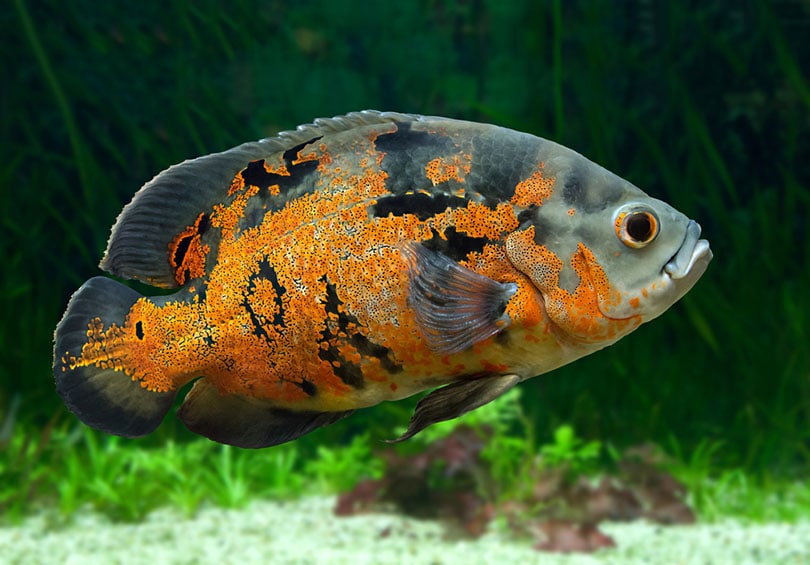
What Are the Signs of Hole-in-the-Head Disease?
As mentioned, hole-in-the-head disease is characterized by tiny holes forming along your fish’s head and lateral line. The holes typically form at a specialized cell type known as neuromasts.
Neuromasts contain sensory cells and cells that support their function. They detect water movement as it flows by cilia.
You can tell your fish has hole-in-the-head disease if you see small holes along the head and lateral line along your fish’s sides. They’re typically small and dark, but they can vary in size, color, and even how deep they are.
What Are the Causes of Hole-in-the-Head Disease in Fish?
The fundamental underlying causes of hole-in-the-head disease in fish are stressors. When your fish are stressed chronically or continuously, their immune system becomes compromised. Chronic stressors don’t just affect the immune system: they can decrease growth and even reproduction, leading to an overall unhealthy tank of fish.
When your fish has a weakened immune system, their defenses aren’t as able to fight off bacterial, fungal, or even viral infections, some of which can also be transmitted from fish to fish. Bacteria that might exist normally on the skin can start to overpopulate and cause infections.
How Do I Care for a Fish With Hole-in-the-Head Disease?
Don’t start with just throwing antibiotics into your fish tank. You need to take steps to improve your fish’s water and overall health.
1. Improve the Quality of Your Water
You need to verify that your water chemistry is appropriate for your fish. According to Aquatic Veterinary Services, you should use a liquid-based test kit for checking for the following values:
You’ll want to use a relatively new test kit for the most accurate results rather than one you’ve had sitting around for years. You should also check your water temperature.
Adequate biofiltration is vital to a healthy tank. Filters that hang on the back of the tank are not usually as effective as canister filters.

2. Diet
You’ll want to ensure your fish eat a balanced diet and get enough. Feeding out of the same fish food container for months can degrade the vitamins and nutrient quality. Look for ways to add vegetable fiber or chitin to your fish’s diet. Hexamita can be associated with a lack of fiber.
3. Treat Underlying Health Issues
You’ll want to treat your fish for any underlying health issues that could compromise their immune system and increase their risk of developing hole-in-the-head disease.
Note that there have been multiple cases of hole-in-the-head evaluated with no Hexamita present, so having hole-in-the-head disease doesn’t automatically mean that your fish have Hexamita.
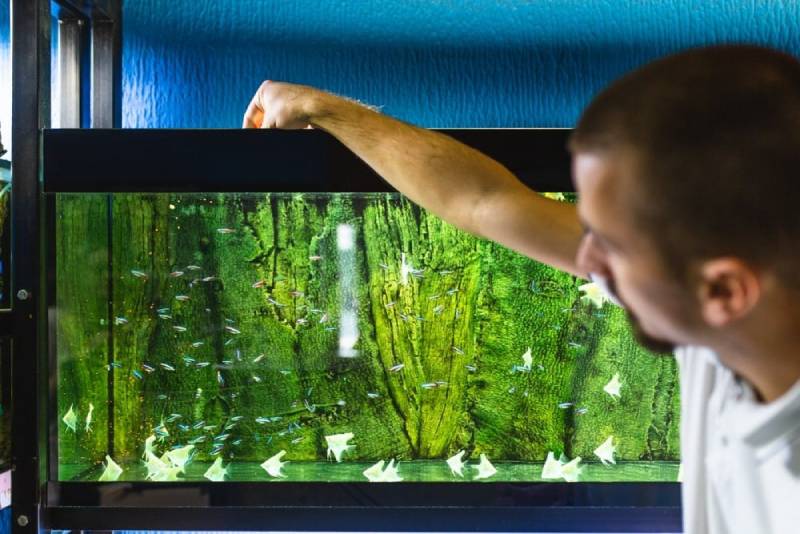
4. Decrease Other Stressors
Other factors can increase your fish’s stress, potentially compromising their immune system.
Bullies can pick on fish—even larger fish—decreasing their access to food, injuring them, and more. Watch your fish when you feed them. Are you noticing one or two fish getting most of the food? Try spreading the food out more, or move these bullies to a new tank.
Noise from within the tank and outside of it can stress your fish out. Consider using quiet equipment to reduce the noise your fish has to deal with in its home. Move televisions, stereos, and sound systems away from the tank. You can also consider adding insulation to reduce noise in your fish tank.
Frequently Asked Questions
How do you treat Hexamita in fish?
The treatment of choice for Hexamita is an antibiotic called metronidazole. Also known by the brand name Flagyl, metronidazole should be added to your fish’s food at 50 milligrams per kilogram of your body weight. You’ll need to give it for five days.
If your fish isn’t eating, try medicated baths with metronidazole dissolved in water. You’ll do this every other day for a total of three treatments. This treatment regime is less effective because it may not treat all parasites in your fish’s intestinal tract.

Is hole-in-the-head disease fatal?
Hole-in-the-head disease or head and lateral line erosion can be fatal, but it’s usually not. It can cause unsightly wounds that lead to permanent disfigurement. That said, fish can die from other issues correlated with hole-in-the-head disease. Starvation, underlying health problems like mycobacteriosis, and more can all cause your fish to die.
Conclusion
Hole-in-the-head disease is a bacterial infection that affects specific areas of your fish and teens and is caused by underlying stressors. To treat the condition effectively, you’ll need to improve your tank’s water quality and improve your fish’s quality of life, such as by increasing food intake and decreasing noise and bullying. Contact your aquatic veterinarian if you’re having trouble with your fish husbandry for recommendations and treatment.
Featured Image Credit: Bignai, Shutterstock




